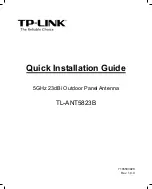
Page-19
BevFlex-4X Installation Manual Rev 2.23 November 2019
Figure-16 Flag Antenna Block Diagram
Receiver
Control Unit
Coax
RG-6 Coax
Ham Shack
Terminator Unit
Terminator Unit
Feed Unit
Ant
Rev
Ant
Fwd
B OUT
FWD IN
A OUT
REV IN
RX
Forward
Reverse
BevFlex-4X Block Diagram - Flag Configuration
RG-6 feed lines to shack
Any length, do not need
to be the same length
Directions
#12 Antenna wire
#12 Antenna wire
Lower wire 10' above ground
34' Typical
flag horizontal length
8' Typical
8' Typical
RG-6 Coax
Direction indicates direction
of main receive lobe.
Note: Feed line connections
are reversed for Flag, EWE,
and VE3DO configurations.
FWD END
REV END
Terminal 1
Terminal 1
Terminal 2
Terminal 2
Like the EWE, the Flag has a feed point on one vertical element (forward direction) and a termination point on the other
vertical element (reverse direction). By selecting the appropriate taps on the BevFlex-4X universal termination units, the
Flag now is reversible with individual RG-6 coax feed lines connected via the termination unit to each of the two vertical
elements,
as shown. The box normally used as a “feed point unit” in Beverage and BOG installations is now used as an
isolation transformer to maintain balance and eliminate ground loops in the system. Note that the coaxial feed-line
connections to the switching control unit are reversed from the Beverage connections when the BevFlex-4X is configured
as a Flag or EWE antenna system. The major advantage of the Flag antenna is retention of reasonable low frequency,
low noise performance with a much smaller real estate requirement than either the Beverage or BOG. Figure-15 shows a
typical Flag antenna pattern.
The Terminal Unit internal jumpers must be reconfigured for Flag antenna use. The factory setting is for Beverage type
antennas. See Table-3 and Figure-19 and Figure-20 for more information on configuring the jumpers in the Termination
Units.













































